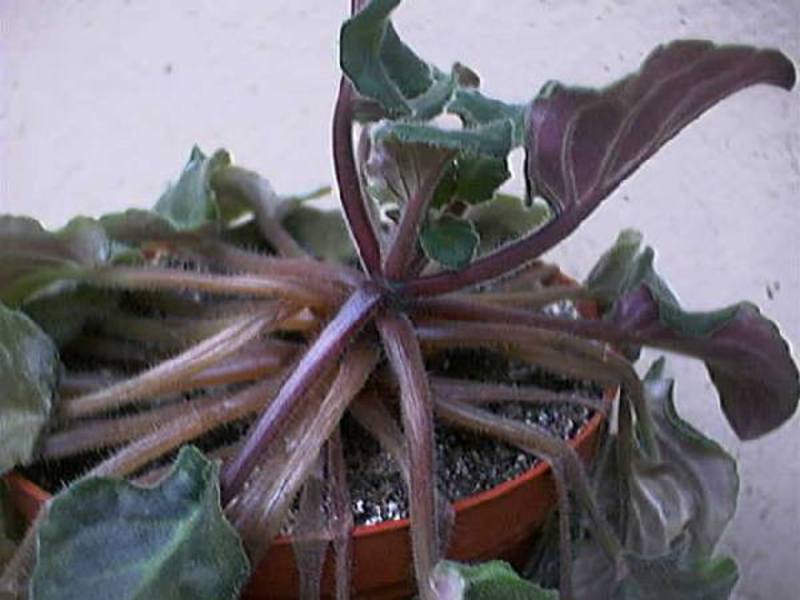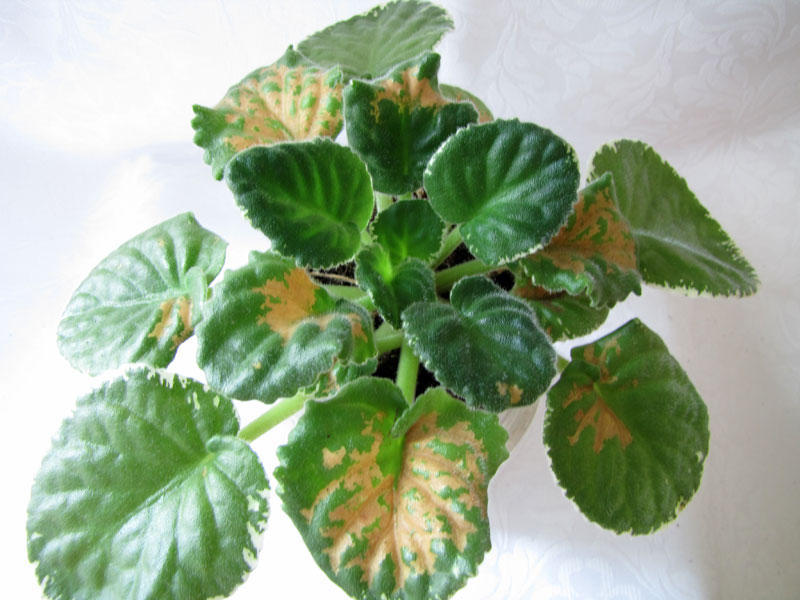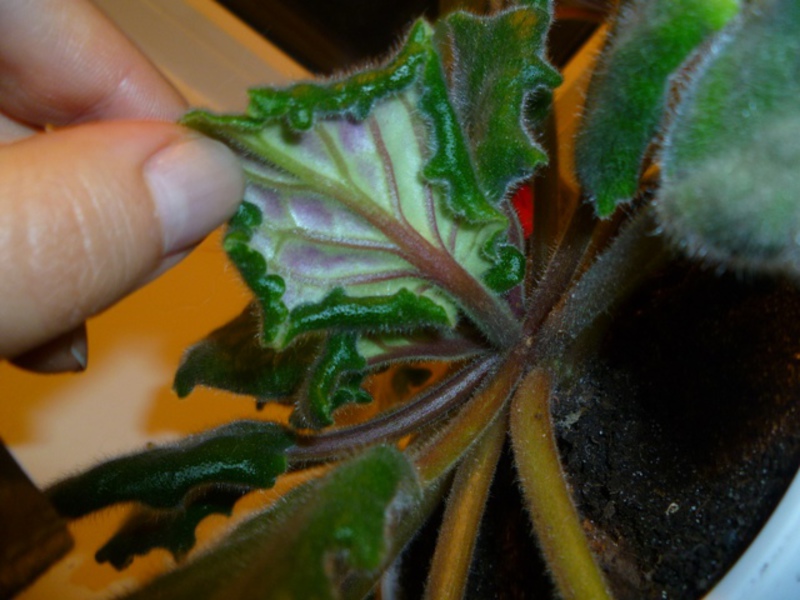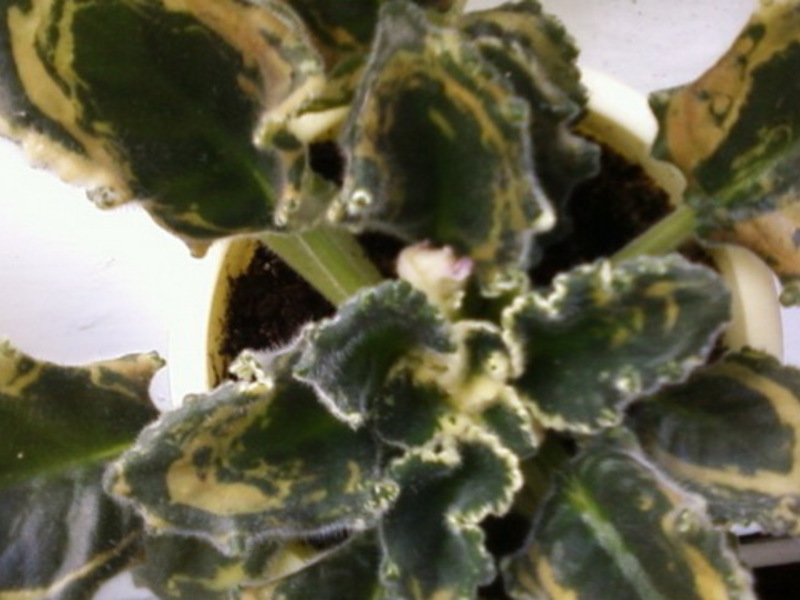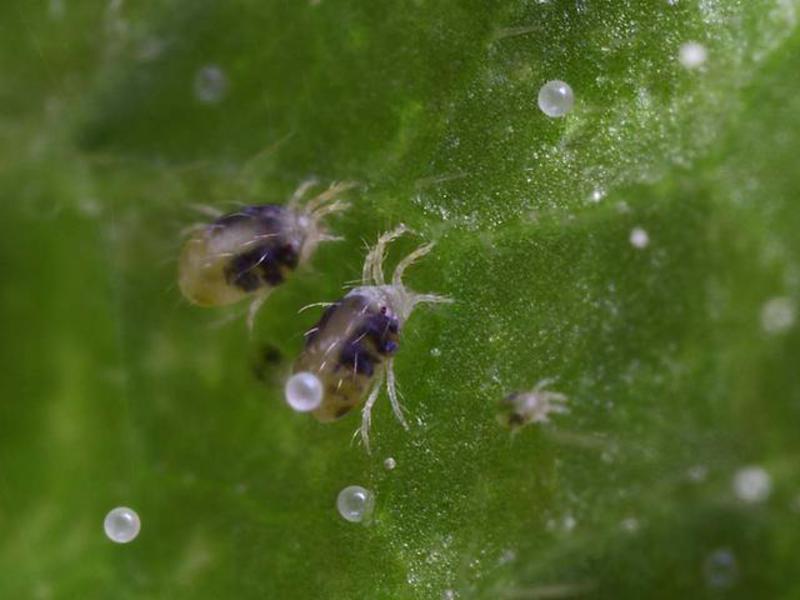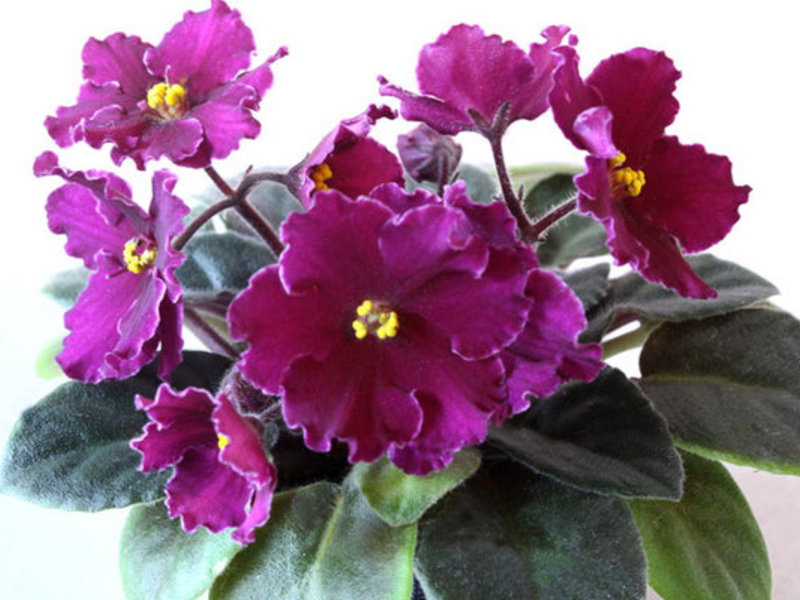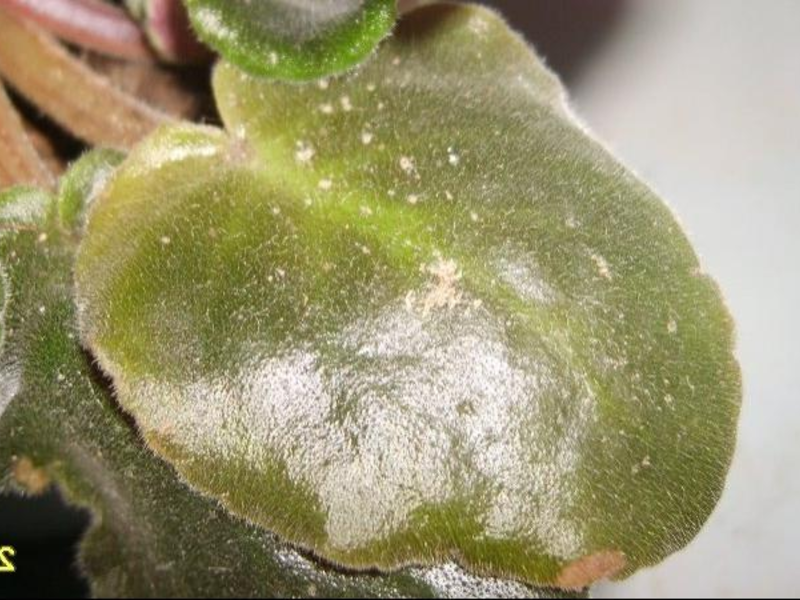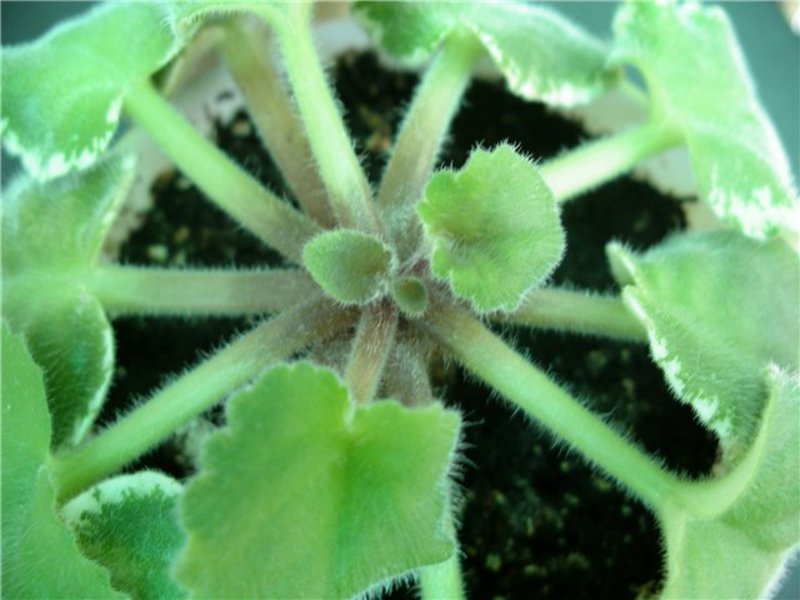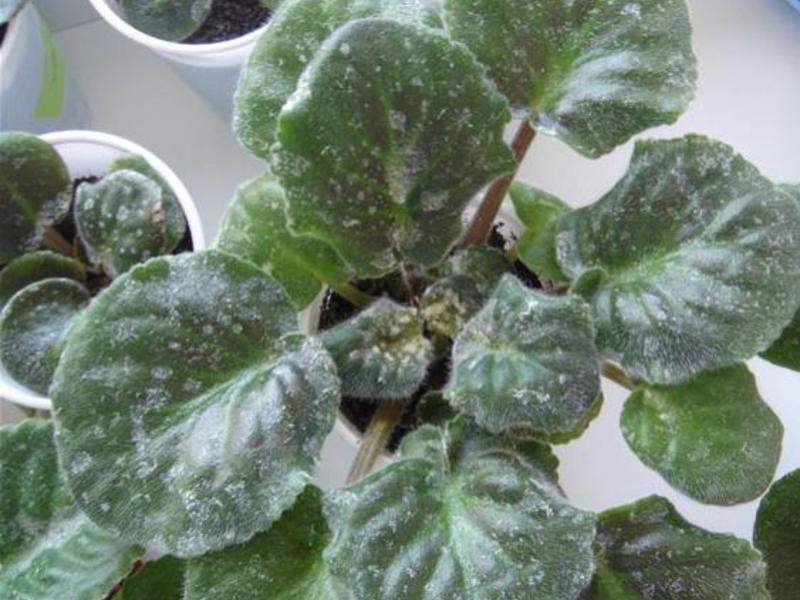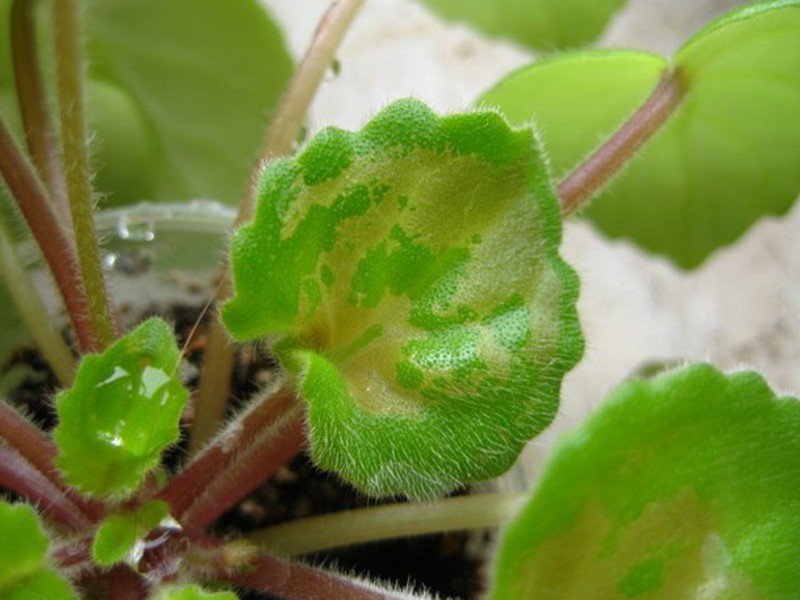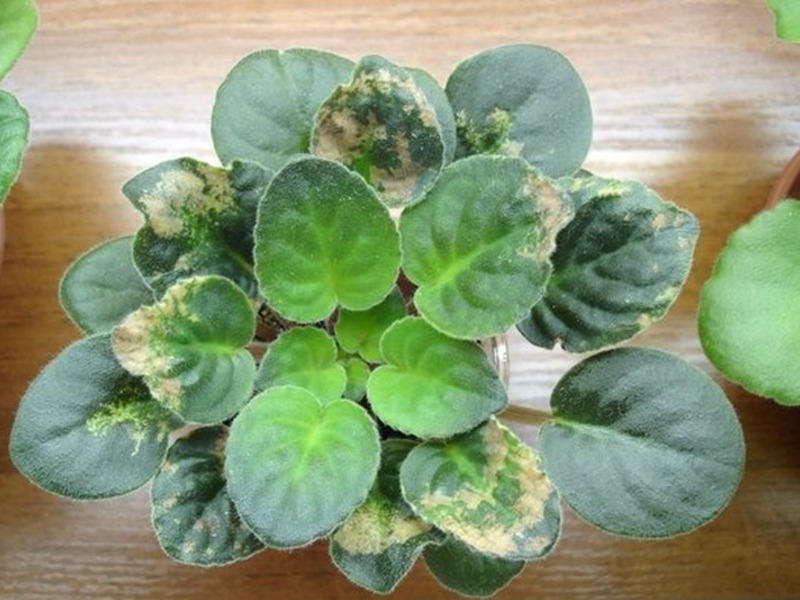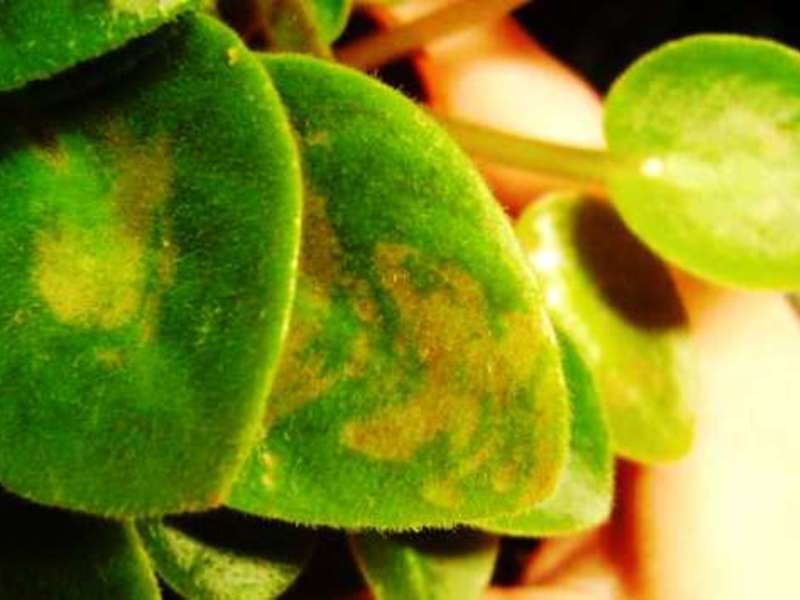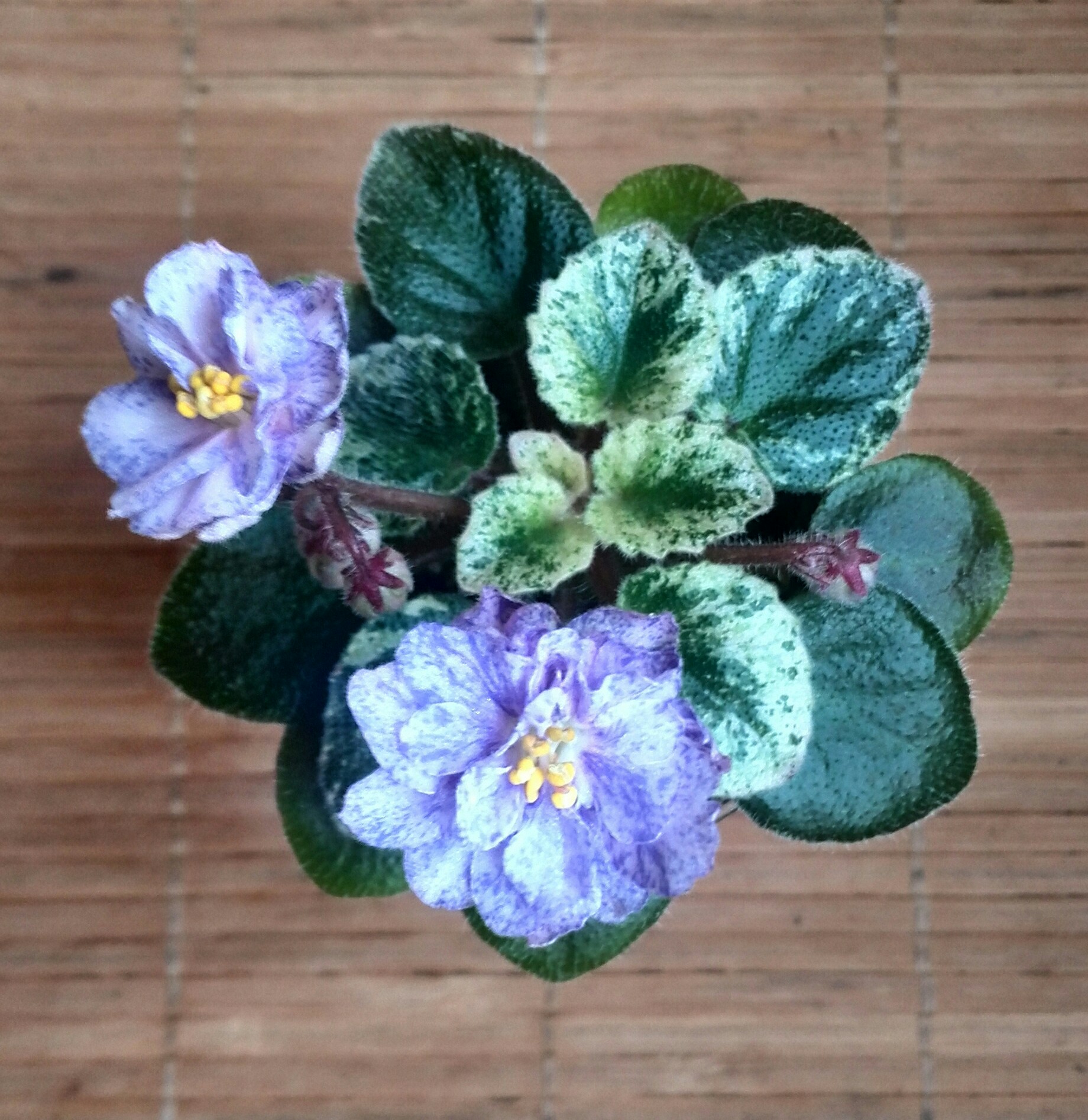The violet is considered a capricious houseplant that is prone to various diseases. This beautiful flower needs constant care and attention. Saintpaulia has a very delicate stem, so it always becomes the object of attack by pests, which must be got rid of. In addition, she is susceptible to various diseases.
Content
Proper care of a violet
Flower growers try stick to some rules... For example, in order for a flower to feel at home and develop well, it is necessary to provide conditions as close as possible to the growing site. Saintpaulias are native to the tropics of eastern Africa with a humid and warm climate. If the water, temperature, light or air regime is violated, the flower weakens, in addition, its resistance to the effects of various microorganisms worsens.
Violets love warmth, so you need to keep them in a room at a temperature of 20-25 degrees without drafts and hesitation. If the flowers are placed in a cold room, they simply stop growing. Keeping this plant at too low temperatures with frequent watering can lead to rot not only of the stem, but also of the roots. Temperatures above 30 degrees also negatively affect the violet, causing bacterial and fungal infections.
Saintpaulia prefers daylight, in other words, soft and diffused lightbut not too bright. With a shortage of light, the flower stops blooming, and from its excess, the leaves lose their elasticity, become spotty and turn yellow.
The health of this attractive flower also depends on the soil, because through it diseases and pests are most often infected. The soil in the pot should be nutritious, loose, light, provide an outflow of excess water and allow air to pass through well. The violet has a very fragile root system, which in heavy soils based on garden soil is prone to decay and waterlogging. To avoid this, it is necessary to freeze the ground for a week before planting a flower.
Saintpaulia likes it better when the soil is not wet, but moistbecause the plant is a representative of the tropics. The violet should not be watered or sprayed with ice water. To obtain the required air humidity, flower pots are placed in trays moistened with gravel, expanded clay and sphagnum, or microspray is performed.
When the soil in a flower pot is acidic, that is, it has a pH below 5, the leaves begin to take on a yellow tint at the edges, phosphates stop dissolving, and the rosette thickens. In such a situation, for watering violets, it is better to use a dolomite solution consisting of one spoonful of flour and five liters of water. In alkaline soil, the houseplant stops growing and turns pale. In this case, it is advisable to water it with a mixture obtained from 2.5 liters of water and a tablespoon of vinegar.
Dangerous pests of Saintpaulias
 Worms are dangerous because they deform violet leaves. In places of their bites remain brown or red spots... The female of this insect can be seen on an earthen coma, she seems to be covered with transparent white fluff.Pests live in folds and axils of leaves, on peduncles. If a furry louse is found on a violet, then it is necessary to process the flower with the following means:
Worms are dangerous because they deform violet leaves. In places of their bites remain brown or red spots... The female of this insect can be seen on an earthen coma, she seems to be covered with transparent white fluff.Pests live in folds and axils of leaves, on peduncles. If a furry louse is found on a violet, then it is necessary to process the flower with the following means:
- Phyto-farm;
- Aktara;
- Aktellik.
For prevention purposes, when planting a plant, put bazudin in pots.
Small thrips are also capable of spoiling the violet. These white pests get on the flower from brought plants or poplar fluff. They infect stamens and anthers, actively moving around the plant. To combat them, you can use Akarin, Vertimek, Agravertin and Dantop.
Quite often, Saintpaulias are affected by aphids, which are a translucent insect of black, green or reddish hue. Aphids can be seen on viola growth points and leaves. Because of these pests, young shoots die off. To get rid of them, the violet should be sprayed with a solution obtained from household or insecticidal soap. In addition, you can treat it with tobacco infusion or plant a lacewing or ladybirds on a flower. If there are too many aphid colonies on the plant, then it is better to use insecticides.
Violets are still attacked different types of ticks:
- Red spiderweb. He leaves behind red spots surrounded by cobwebs, as a result of which the leaves change shape and dry out.
- Cyclamen. This pest can be seen on young leaves in the middle of the rosette, leaving yellow dots on them.
- Spiderweb. Such a tick affects the outer leaves of the violet, which is why brown depressed spots appear on them.
If these insects are found, the flower should be treated with phytoverm, acarin or actellik.
Common diseases of Saintpaulia with a photo
Powdery mildew
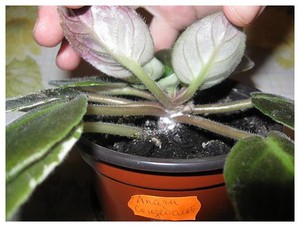 Many indoor plants are susceptible to this fungal disease. It manifests itself by the appearance of a white bloom on the leaves. However, it is quite difficult to remove it from the flower. Promotes education powdery mildew high humidity and low temperature in the room. The following drugs will help to cope with this disease: saprol, byteleton and topaz. Moreover, it is recommended to alternate them. Sulfur is also considered an excellent powdery mildew remedy. First, she needs to powder the violet, and then cover the flower with plastic.
Many indoor plants are susceptible to this fungal disease. It manifests itself by the appearance of a white bloom on the leaves. However, it is quite difficult to remove it from the flower. Promotes education powdery mildew high humidity and low temperature in the room. The following drugs will help to cope with this disease: saprol, byteleton and topaz. Moreover, it is recommended to alternate them. Sulfur is also considered an excellent powdery mildew remedy. First, she needs to powder the violet, and then cover the flower with plastic.
Insidious late blight
When Saintpaulia is infected with this disease, the main thing is to start treatment on time, otherwise the plant will quickly die. Late blight affects the stems, as a result they acquire a brown tint. With such a disease, the leaves fall off strongly, exposing the trunk. Its appearance is provoked by a fungus that penetrates through the affected areas of the flower or the root system.
During treatment for late blight, the violet will have to be pulled out of the pot and well examine the root system... Any damaged roots should be removed. It is quite simple to define them - they have a brownish appearance. When the roots are completely affected, it is better to cut the stem with a razor. The resulting cutting can be rooted in water under plastic wrap. After that, it is advisable to plant the violet in new soil and a pot.
Dangerous fusarium
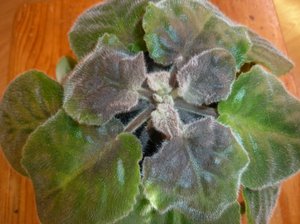 This disease occurs most often if the grower violates the conditions for growing violets:
This disease occurs most often if the grower violates the conditions for growing violets:
- Uses an overly spacious pot;
- Does not protect the plant from sudden temperature fluctuations;
- Pours with too cold water;
- I planted a flower in a very heavy ground.
All this leads to the fact that the processes of the flower Fusarium fungus affects... It leads to decay of leaf stalks and roots. It is easy to detect the disease, because when infected, the leaf petioles turn brown and fall off, and the roots darken and separate from the ground. To prevent the occurrence of such a disease, it is necessary to periodically water the violet with fundozol. Affected indoor plants should be treated with fungicides, removing all dried flowers and decayed areas.
Gray rot
If a fluffy coating of a brownish-grayish hue has formed on the violet on the processes, flowers and leaves, then this indicates the appearance of the fungus Botrytis. Such a disease in a short time is able to cover the entire flower, leading to its death. Gray rot usually penetrates together with plant residues in the soil. She quickly infects other plants, and spores of the fungus Botrytis can be found in any soil. It is for this reason that the earth should be frozen in the freezer and spilled with a solution of potassium permanganate.
To prevent such problems, it is necessary to immediately remove the brown parts of Saintpaulia, and apply fungicides to the affected flowers. Do not feel sorry for rotten plants, they should be immediately thrown out along with the soil. As a preventive measure, do not overfill the uzumbar violet with water, and also do not allow sudden temperature jumps.
Rust
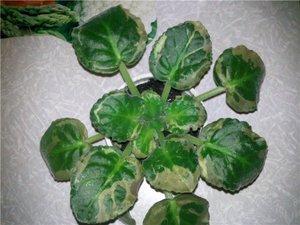 This violet disease is caused by rusty fungi. If the plant is affected by rust, then on both sides of the leaf yellow-brown bumps appear... To ripen the spores of these fungi, a little water on the leaves is enough, as well as a humid and warm microclimate in the room.
This violet disease is caused by rusty fungi. If the plant is affected by rust, then on both sides of the leaf yellow-brown bumps appear... To ripen the spores of these fungi, a little water on the leaves is enough, as well as a humid and warm microclimate in the room.
But remember that specks on violet leaves are not always a symptom of the disease. Yellow dots can appear on the plant if it is in an awkward location. Insufficient lighting, drafts and direct sunlight quite often lead to holes and yellow leaves on them.
With an excess of fertilizers, too yellowing of the leaves is observed, therefore, it is imperative to observe the proportions during the preparation of dressings for violets, and also adhere to the advice of agricultural technicians on their use.
